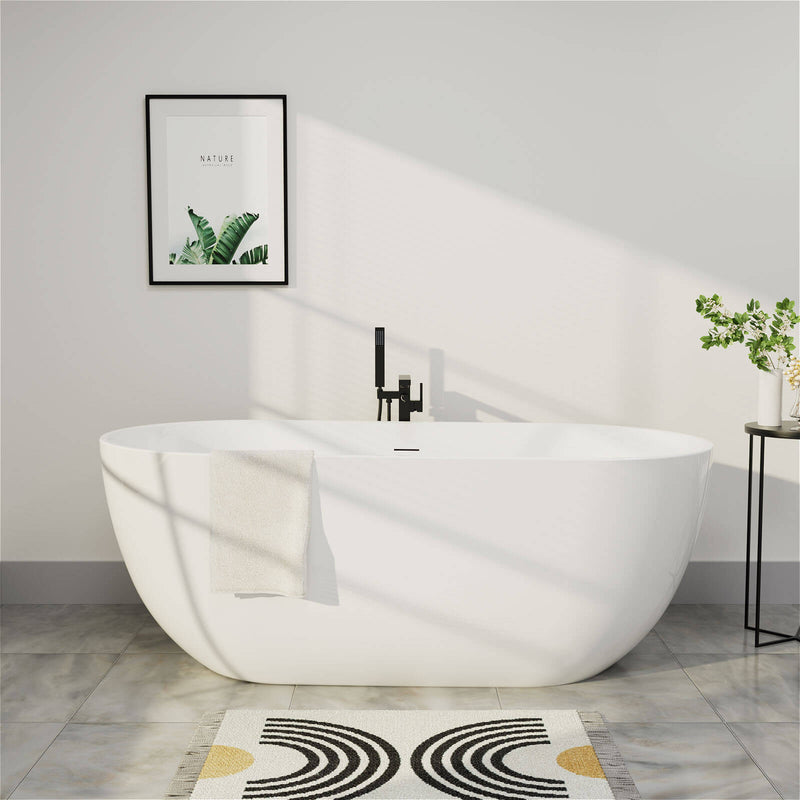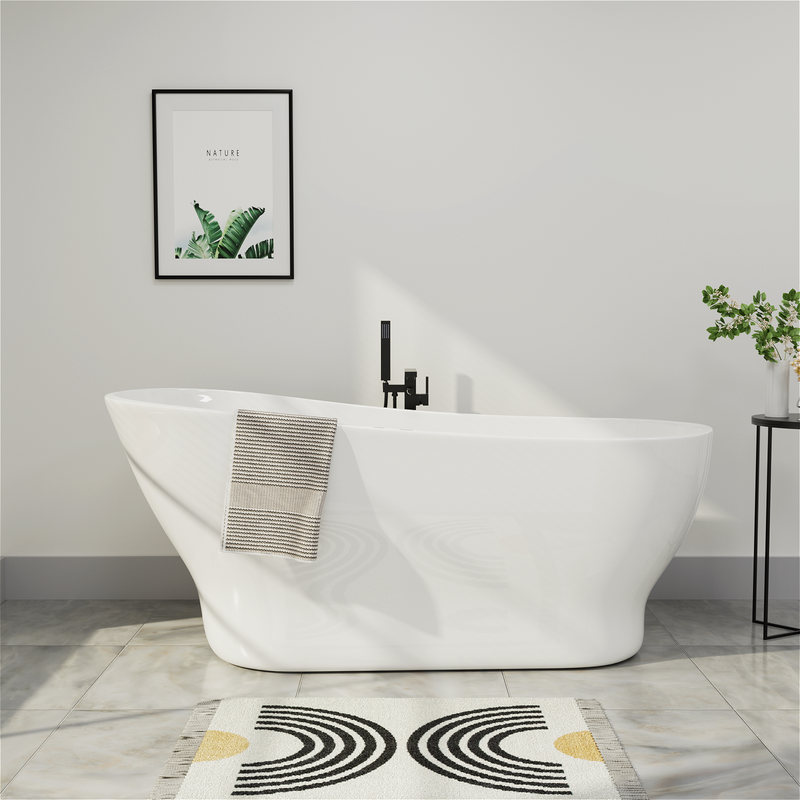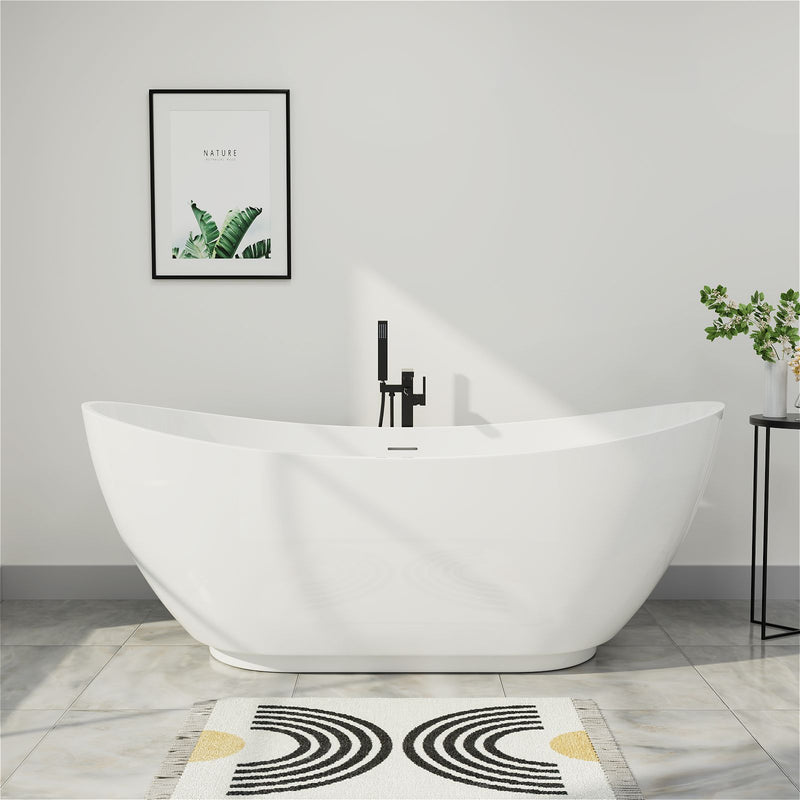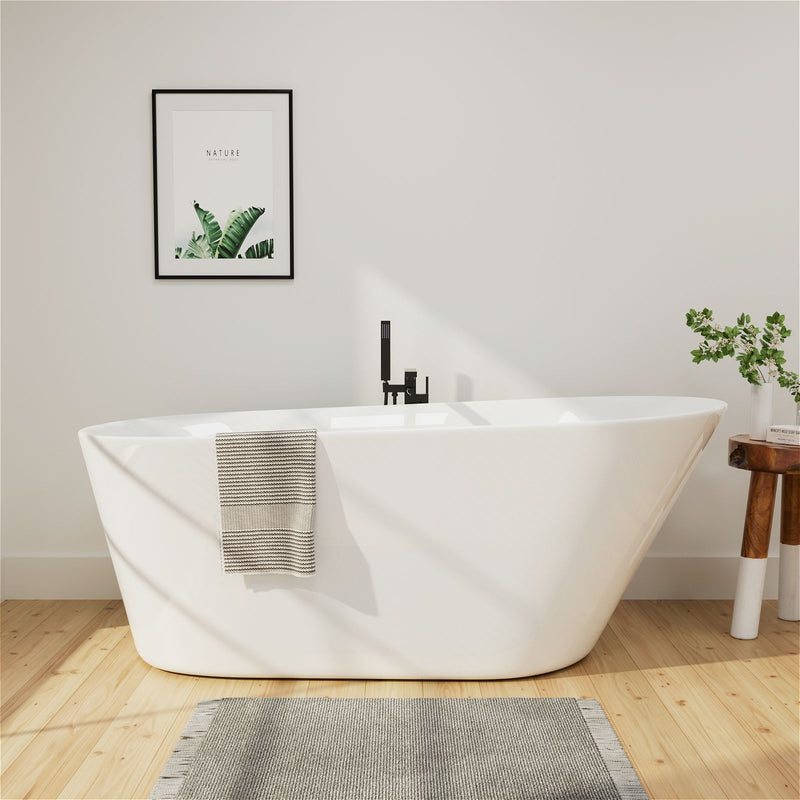Your bathtub has a component called an overflow drain. You may not even know this component exists, at least until it breaks or stops working. Overflow drains are fairly common components that are used to prevent water from overflowing. In addition to bathtubs, they are also used in manufacturing plants, aquariums, and other areas. The main purpose of a bathtub overflow drain is to prevent water from leaking onto the floor, which could damage the bathtub and surrounding appliances or fixtures. Here's what you should know about overflow drains and why they are important.
What is a Bathtub Overflow Drain?
A bathtub overflow drain is a clever safety feature built into most bathtubs that prevents water from overflowing over the edge of the tub and flooding your home. It connects to a hidden pipe system that allows water to flow into the overflow when the water level in the bathtub reaches a certain height, which then directs the excess water to the main drain. You may see a small opening near the top of the bathtub, usually covered by a trim plate or cover.
The purpose of an overflow drain is to collect excess water from the bathtub or faucet as a backup. The drain collects water and prevents it from overflowing if you accidentally forget to turn off the water. An overflow drain also helps keep the water level in your tub to a minimum - as long as the overflow drain is in the correct position, it will drain the water but maintain the existing water level, ensuring that the water level is constant when you turn on the faucet before taking a bath.
Not every tub is equipped with an overflow, but it is now required by international building codes. If your tub doesn't have an overflow, it's recommended that you update it to ensure your bathroom is safe and compliant.
How a Tub Overflow Drain Works
Location: The overflow drain is usually located near the top of the tub, usually under or behind the faucet.
Design: It consists of a drain opening and an overflow cover. Behind the cover is a gasket that creates a watertight seal when the cover is in place.
Function: When the tub fills, water enters both the main drain at the bottom of the tub and the overflow drain near the top. As long as water flows freely down the main drain, the overflow drain remains dry.
Safety Feature: If the water level in the tub rises to the point where it covers the overflow drain, the excess water enters the overflow drain and flows down the pipe connected to the main drain. This prevents water from the tub from overflowing onto the bathroom floor.
Types of Bathtub Overflow Drains
There are several main designs, each with its own unique look and benefits. Understanding the differences can help you choose the best option for your bathroom, or better understand the one that's already installed.
Traditional Overflow Drain
First up is the traditional overflow drain, which is the most common type of drain in the bathroom. It features a small opening near the top of the tub, usually covered by a decorative plate or cover.
This cover has slots or holes that allow water to pass through. Behind the cover there is a pipe that connects to the main drain system, ensuring that excess water has a place to drain.
When the water level gets too high, the water flows into the overflow and down the pipe, preventing it from overflowing onto the bathroom floor.
This type is a good fit if your bathroom has a classic vibe and features traditional fixtures, such as a pedestal sink or chrome faucet.
Integrated Overflow Drain
Next, we'll look at the integrated overflow drain, which is more modern and stylish. Unlike a traditional drain, it's built directly into the tub structure. You won't see a noticeable cover - instead, it might be a thin slot or a series of small holes cut along the edge of the tub. It's all about keeping things sleek and seamless.
Excess water flows out of these hidden openings, down internal plumbing to the main drain, where it does the job without drawing attention. If you're dreaming of a spa-like bathroom with clean lines and a modern feel, this type of bathroom will elevate the overall effect.
Side Drain Overflow System
Finally, there's the side drain overflow system, which is less common but still very eye-catching. Rather than having the overflow near the top, this design runs along the side of the tub. You might see a vertical slot or a row of holes in the tub wall, creating a distinctive curve.
When the water reaches the side holes, it flows into and is directed to the main drain, which controls the flow. If you have a vintage-style or eye-catching tub in your bathroom, a side drain system can perfectly complement its charm.
Why is a Bathtub Overflow Drain Important?
A bathtub overflow drain may seem like a small detail, but it plays an important role in keeping your bathroom safe, functional, and beautiful.
Safety
One of the main reasons an overflow drain is vital is safety. If a bathtub overflows, water can quickly spill onto the bathroom floor, creating a slippery surface that can easily lead to an accident.
A fall in the bathroom can have serious consequences, especially for children or older adults who are more vulnerable.
An overflow drain catches excess water before it overflows, reducing the risk of slips and falls. This simple feature helps keep everyone in your home safe.
Prevents Floods
Floods are a homeowner's nightmare. If a bathtub overflows, water can seep into the floor, walls, and even the ceiling, leading to expensive repairs.
An overflow drain helps prevent all of these problems because it removes excess water before problems arise.
A Better Bathing Experience
Bathtub overflow drains can also make your bath time more enjoyable. They help maintain a constant water level, so you don't have to worry about the bathtub being too full or too shallow. This means you can relax in the bathtub without having to adjust the water level frequently.
Plus, knowing that the overflow drain has your back, you can focus on relaxing instead of watching the water level.
Aesthetic Appeal
Overflow drains also enhance the overall look of your bathtub. Many designs come with stylish covers or drain panels that blend in perfectly with the surface of the bathtub and enhance the aesthetics of your bathroom.
Whether you prefer a sleek, modern look or a more traditional look, there is likely an overflow drain design that complements your style.
Problems that Overflow Drain may Cause
Corrosion or Rust
Corrosion is caused by excessive moisture levels in the drain pipes (iron pipes). Prolonged exposure to water can lead to rust, which ultimately reduces the durability of the pipes. To avoid this, it is best to use durable PVC drain pipes. PVC pipes are more flexible than iron pipes and can be easily installed with a simple set of installation tools.
Drain Clogs
Clogs are formed when dirt, hair, and other particulate matter accumulates somewhere. The drain in your bathtub is an ideal place for dirt and hair to accumulate. Clogs can seriously affect the flow of water and clog the pipes. If not cleaned up in time, over time, this can cause a decrease in water pressure and damage the drainage system. You can easily clean up clogs using tools available online. After taking a bath, use the tools to clear out any debris. Make sure the water flows as smoothly as possible into the drain.
Leaks
Corrosion can cause cracks in the drain pipes and drain edges, which can lead to leaks. If the corrosion problem is solved, 95% of leaks can be solved; for the remaining 5%, you must ensure that all parts are firmly connected without any gaps between each other.
How to Care for a Bathtub with an Overflow Drain?
To prevent any abnormalities with the overflow drain, you can follow these steps:
- When cleaning, always use a diluted detergent. This will help protect the drain system and the bathtub from any structural damage.
- After taking a bath, use a drain cleaning kit to thoroughly clean the drain and remove any unwanted debris.
- Keep the bathroom as tidy as possible, which will help reduce the long-term accumulation of dust.
How to Fix a Leaky Tub Overflow Drain
Step 1 Check the Overflow Gasket
The bathtub overflow seals the tub with a ring-shaped gasket that is usually located between the flange around the pipe opening and the back of the tub wall. The gasket is made of neoprene or rubber and can become brittle and crack over time, causing leaks.
To check the overflow gasket, remove the overflow plate. Remove the screw or screws that hold the overflow plate in place and pull the overflow plate off. You may need to cut away the caulk around the overflow plate before removing it. Use a utility knife to cut away the caulk.
Inspect the gasket. If the gasket is badly worn, cracked, or compressed, it will need to be replaced. When in doubt, it is best to replace the gasket to rule it out as a leak. During the inspection, you may find that the overflow tube assembly is loose or damaged. If so, this can be easily fixed by simply replacing the entire overflow assembly with a new part.
Tip: Some overflow plates are attached to the stopper assembly of the tub drain. In this case, carefully pull the assembly up and out of the drain. Most assemblies have a thin, long stem that connects to a cylindrical plug at the bottom. If the drain needs to be replaced, you may need to contact a professional: replacing the drain usually requires cutting the drain pipe and drain tubing, which may require cutting into the wall or floor. Overflow drains are also connected to the tub drain, which makes the replacement process more complicated.
Step 2 Remove the Old Overflow Gasket
When replacing a worn or damaged gasket, first remove the old gasket. The overflow drain is usually somewhat flexible, and you can push it back (away from the tub) to make some room to grab the gasket with your fingers or needle-nosed pliers. Remove any old gaskets and clean around the tub hole and drain flange with a rag and rubbing alcohol to remove any dirt and residue.
Step 3 Install the New Gasket
Push the new gasket into the hole in the tub wall, carefully snug it against the flange around the drain opening. Make sure the gasket is completely snug against the flange so that it forms an even seal with the tub.
Overflow gaskets are usually tapered to fit the angle of the tub wall, follow the manufacturer's instructions for how to use tapered washers.
Step 4 Reinstall the Overflow Plate
Put the overflow plate back in place, making sure the opening (where overflow water flows out) is at the bottom. If the overflow plate comes with a stopper assembly, carefully slide the stopper into the overflow tube and slide the rod down until the overflow plate makes contact with the drain opening.
Secure the flapper with the screws. If there are two screws, tighten them a little at a time, alternating back and forth, making sure the gasket is pressed evenly against the tub.
Tip: The best way to test a new gasket (or other overflow tube repair) is to fill the tub with water and let the overflow tube do its job-that is, let some water overflow into the tub. To avoid wasting a lot of water, you can wait to do this until your next bath.
Tub Overflow Troubleshooting Tips
If the overflow gasket is in good condition, or replacing the gasket doesn't seem to stop the leak, there are a few other things you can try:
- Make sure the gasket is installed correctly and centered on the tub overflow drain.
- Inspect the tub rim around the overflow plate for scratches or corrosion that could allow water to seep in from behind it.
- Check to make sure the overflow plate is screwed into place and that the notch in the plate is facing downward.
- Check the seals on other shower parts, removing debris, old caulk, and applying new caulk as needed to ensure water doesn't get behind the shower.





